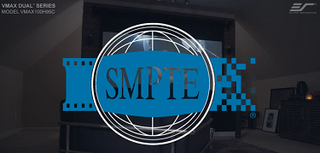
Arguably the most important element of creating a great projected visual display is in the combination of a projector’s brightness and a screen’s ability to adequately reflect light. The overall result is known as Image Luminance. Simply put, if you want a good projected image, the image needs to be bright enough to be easily seen. It sounds simple enough but there are various rules of physics that must be followed in order to get that perfect image. In order to successfully acquire the right projector an projection surface, you need to be familiar with these basic concepts:
● Projector Brightness (Lumens)
● Screen Reflectivity (Gain)
● Screen Size
● Atmospheric or Room Lighting (Ambient Light)
When these four basic elements of the equation are identified, the next step is to understand the basic properties of each as well as how we can calculate these variables into creating a projection system that best works for you.
(ANSI) Lumens
The American National Standards Institute (ANSI) avaraged multiple readings of visible light from various angles to determine a standardized unit of measure known as ANSI Lumens. Lumens are the units of measure for the amount of light that a projector is reportedly able to produce. More specifically, it is a measurement of light intensity as specified by the International System of Units as “a unit of luminous flux equal to the light emitted in a unit solid angle by a uniform point source of one candle intensity��. Mathmatically, it is a measurement of one candela of visible light per squared radian (1 candela * sr) Symbol = lm.
To put it into easier perspective, a candela is about the equivalent of the light of one candle. The candela actually replaces the obsolete measurement of the “Candlepower (cp)” and is equivalent to 1.02 cp units of measured visible light.
Foot Lamberts
A foot lambert is a measurement of visible light that equals 1 circular candela per square foot, or 3.426 candela per square meter. The symbol for Foot Lamberts is Lv (aka. ftL).
- Foot Lamberts are the measured brightness of a projector’s output spread over the surface of your projection screen. Its standardized measurement was established by the Society of Motion Picture & Television Engineers. SMPTE as they are more commonly known developed a standard for determining the amount of light necessary for proper cinematic playback in a darkened room.
- According to SMPTE, the target amount of light necessary for proper cinematic playback in a darkened room is “SMPTE 196M”. This means that the ideal setting is 16 ftL running projector in “open gate” (no film) or 14 ftL running projector running with film (Typical base density of 0.05 yields peak white of 14 Lv .) In other words, the range of foot lamberts for a darkened room would be 12 foot lamberts for the minimum, 22 foot lamberts for the maximum, and 16 foot lamberts as the ideal output for home theaters and commercial cinemas.
When projecting in a room with ambient light, it is recommended that 50 foot lamberts should prove ideal but be prepared to increase or decrease output as home lighting levels tend to vary.
Image Luminance
Image luminance is found by multiplying the Foot Lamberts times the projection screen’s reflectivity or gain. The image luminance is the overall image brightness created by the combination of projector output and screen reflectivity. Projection screens vary in their reflective properties. The reflective neutral matte white screen is typically 1.0 gain but can vary as high as 1.4 in its reflectivity. Negative gain projection screens are designed to enhance contrast levels at the expense of having less reflectivity. They are typically measured between 0.5 to 0.9 gain. Ambient Light Rejecting or ALR projection screens typically perform in the realm positive gain, or anything higher than 1.0 to 1.8 gain. These screens are known for superior brightness and image saturation, however they can also be negative gain as heavy contrast layers are incorporated to enhance darkness levels for superior image quality
How to Calculate Foot Lamberts
Step 1. Determine the area of your projection screen
● Divide the inch measurements by 12 and then multiply the width times the height.
● For this exercise, assume you have a 100” (16:9) screen
● (Area = h*w) or approximately (Area = 4.1*7.25 feet ≈ 29.725 ft²)
● Round to the nearest whole or half number and you should have an area of 30 square feet.
Step 2. Divide your projector’s lumens by the screen’s area from step 1.
● For simplicity, assume that he projector has a 1000 lumens output
● 1000 lumens divided by 30 ft² = 33 Foot Lamberts
Step 3. Find the Image Luminance
Whichever sceen you have, find out what its gain is and then multiply it times the foot lamberts calculated from step 2. Pretend the examples are for 100” 16:9 screens
● Example 1, 33 foot lamberts times 1.0 gain has 33 candelas per ft²
● Example 2, 33 foot lamberts times 1.5 gain has 49.5-50 candelas per ft²
● Example 3, 33 foot lamberts with a negative gain 0.5 is only 16.5 candelas per ft²
Dave Rodgers is a guest writer for numerous publications and the Marketing Manager for Elite Screens Inc., with 20-years experience in the AV and wireless communications industries. See more of his writing at www.elitescreens.com.

